Sheep and Solar: A Perfect Match
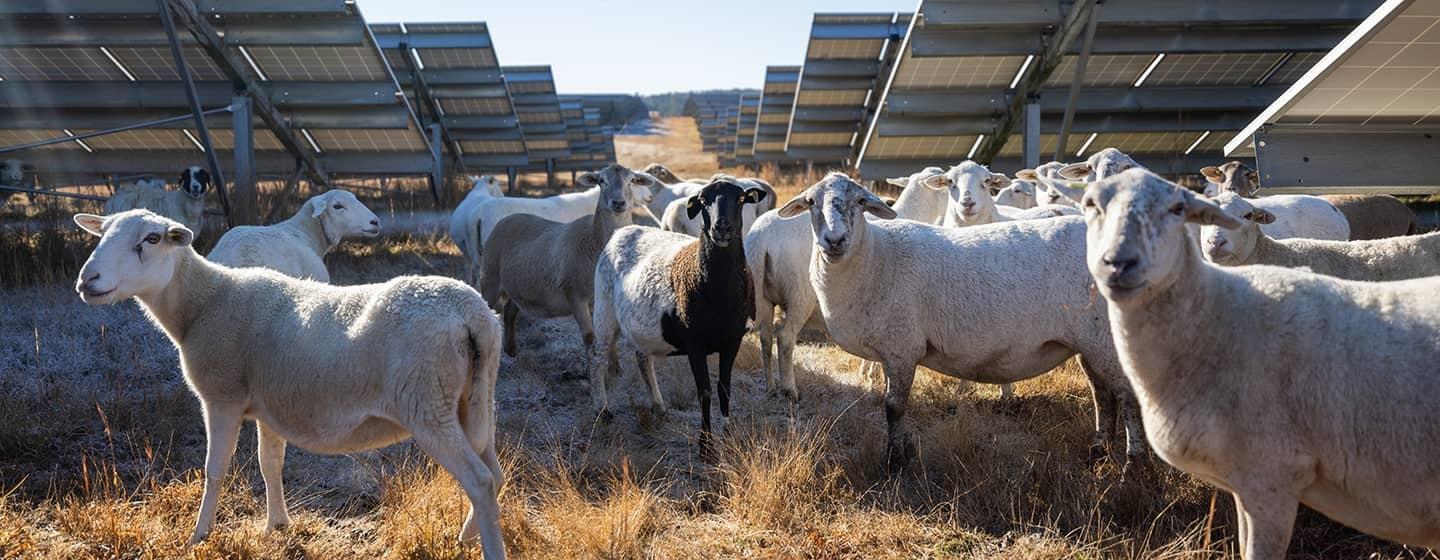

If you’re driving on I-74 on your way to Biscoe, North Carolina, you’ll likely catch a glimpse of a field of solar panels from the highway. That 200-acre expanse is Montgomery Sheep Farm, an agrivoltaics and agritourism operation.
Owner Joel Olsen is a pioneer of solar energy production in North Carolina. He started in 2009 with his company O2 emc, which has grown into multiple companies under O2 Group Ventures, an entity that manages a portfolio of solar installations across North Carolina and Virginia. To Joel, generating energy from the sun just makes sense and adding sheep to the mix is a no-brainer.
“Solar is inexpensive, it’s easy to put almost anywhere, and it makes an ideal place where agricultures can also thrive if you plan early in the design and layout phase,” he says.
The Montgomery Sheep Farm (originally known as the Montgomery Solar Farm) was built in 2015, and it’s added sheep to its operation to cut back on mowing under and around the solar panels. Now, a herd of over 500 sheep keep the vegetation trimmed and add an additional stream of revenue.
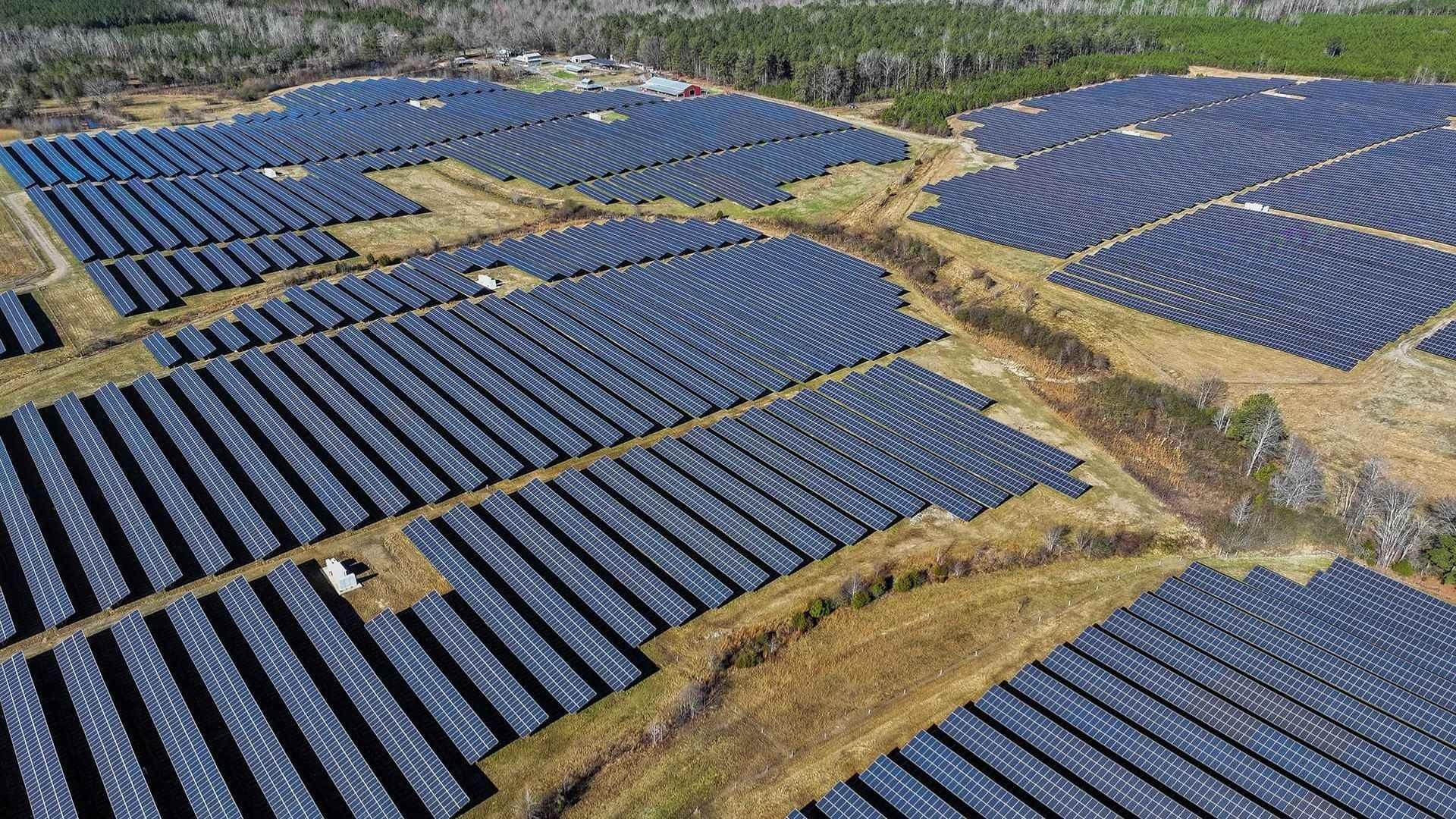
Rotational grazing makes sure the sheep always have enough to eat and the whole farm gets “mowed.”
One of the conflicts when it comes to solar energy generation is that land that is ideal for agriculture is also ideal for solar installations. In addition, prime agricultural land is rapidly being converted to other uses like new development. But Joel says the opposite has occurred at Montgomery Sheep Farm.
The acreage Montgomery Sheep Farm occupies was previously a tobacco farm and then a hunting preserve. If you look at the farm and just see the sea of solar panels, you might think it is no longer farmland. However, when you look closer, a different picture emerges.
“Development in general can really occupy a lot of what was previously farmland. And that’s not necessarily true with solar farming. This site, for example, wasn’t being used for agriculture at all. But after we finished solar, now all 200 acres are put into agriculture,” Joel explains.
Joel and his wife, Tonje, have been evolving the farm since 2015, first adding livestock agriculture and then agritourism.
“We use this as kind of a research station,” Joel says.
“We had to kind of prove that it really made sense to raise sheep on solar farms, and we’ve been doing that now for several years,” Tonje shares.
And part of proving that is bringing people out to the farm to see how it all works.
“This is our ‘innovation station’ where we have school classes … farm dinners and an educational place for people to come and stay and see how it really works,” Tonje explains.
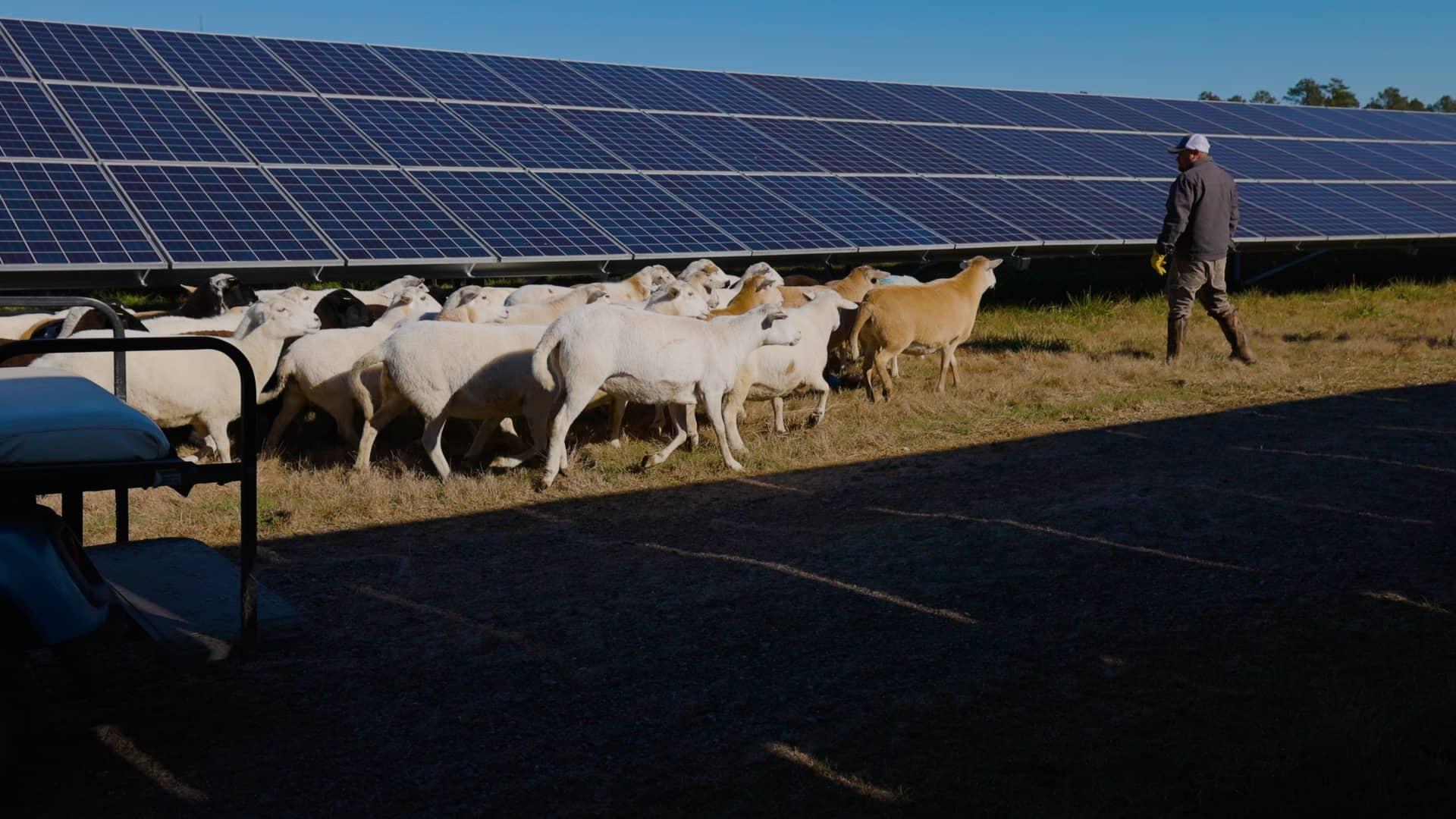
In addition to the Montgomery Sheep Farm, O2 Group Ventures manages solar installations across North Carolina and Virginia and partners with local sheep farmers at those solar sites. The farmers have pasture for their sheep, and the solar installations get maintained.
Tonje remembers the farmers they worked with started to ask them about ways to sell the livestock they raised on solar installations. “We figured we need a market for our lamb,” she says. So a new venture, Sun Raised Foods, was started in 2018.
“I grew up in Norway and I grew up with lamb salami,” Tonje explains. “That’s a pretty common thing to have on the table.”
Lamb is not as common in the U.S., so the Olsens are on a mission to introduce it to people’s palates.
“We have the lamb salami, we have all different types of lamb cuts that’s kind of hard to find other places. We utilize the whole animal. We do dog bones … And we do have also a sausage that’s a garlic bratwurst, which is good,” Tonje shares. “We get a lot of positive feedback. People enjoy coming out. [They] see the farm, see the operation, come here, have dinner outside, meet new people and enjoy a different type of food.”
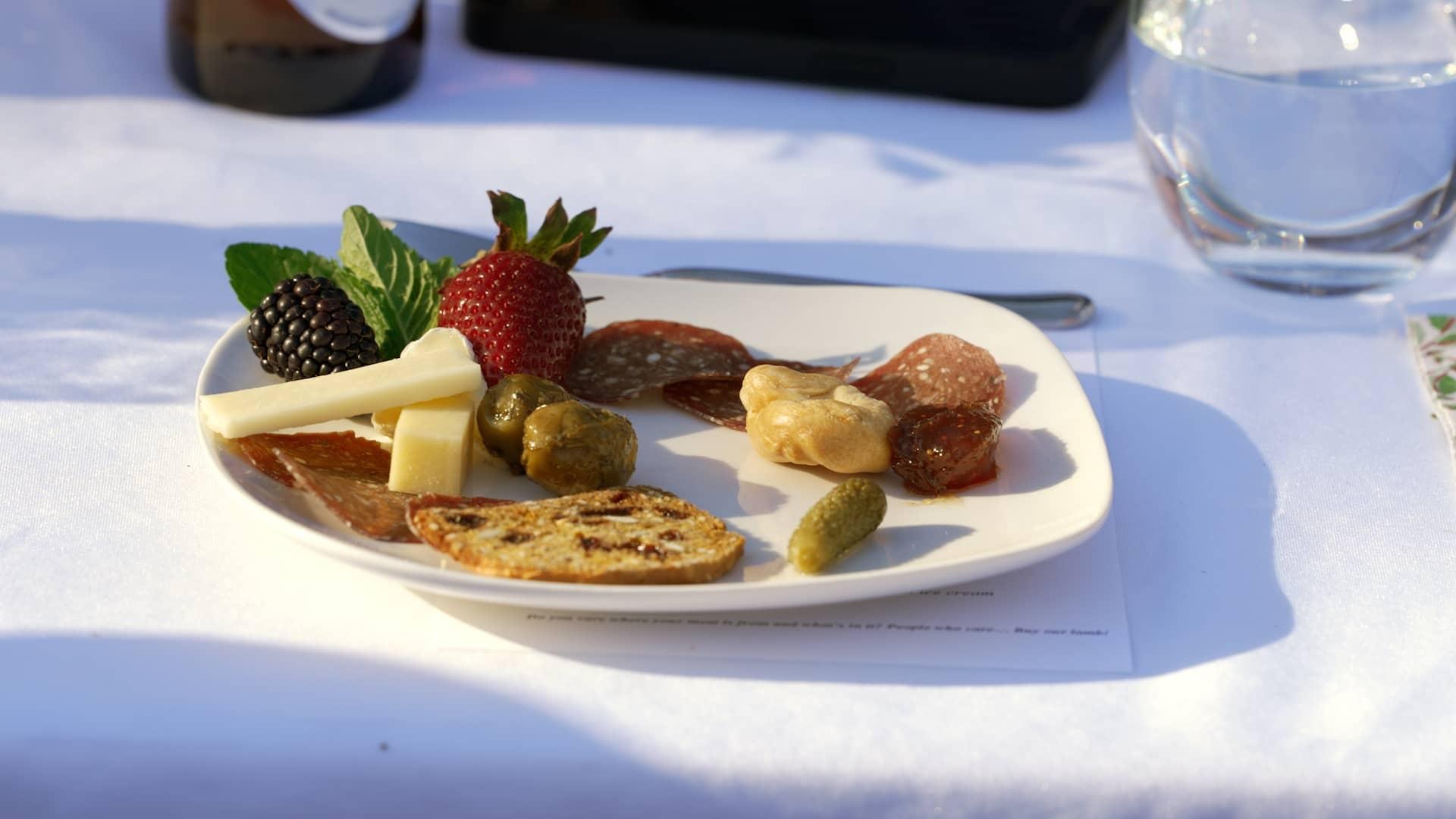
Their lamb is certified Animal Welfare Approved, which means they’re pasture-raised without hormones, using sustainable, high-welfare farming practices. Their efforts are being recognized through awards like Our State magazine’s “Made in NC.”
Because of Montgomery Sheep Farm’s size, it hosts an impressive 20-megawatt AC solar panel installation.
“During sunlight hours, we’re generating 20 megawatts of power,” Joel explains. “If you break that down into how much power the average home consumes on a yearly basis, that’s about the same as what 3,000 homes would consume of power.”
About a 5-minute drive from the farm’s entrance is a power substation in the town of Biscoe, NC. Here, Montgomery Sheep Farm’s solar installation is connected to the main power grid.
Joel explains how the power generated by the farm interacts with the power needs of nearby towns after it’s transmitted to the substation.
“You can think about it like water, right?” Joel illustrates. “The water that’s coming in these big pipes on transmission lines [is] looking at this substation and saying, ‘Hey, do we need to add more water?’ If the Montgomery Sheep Farm is generating enough power that the bucket is full, then that power will go to the next town.”
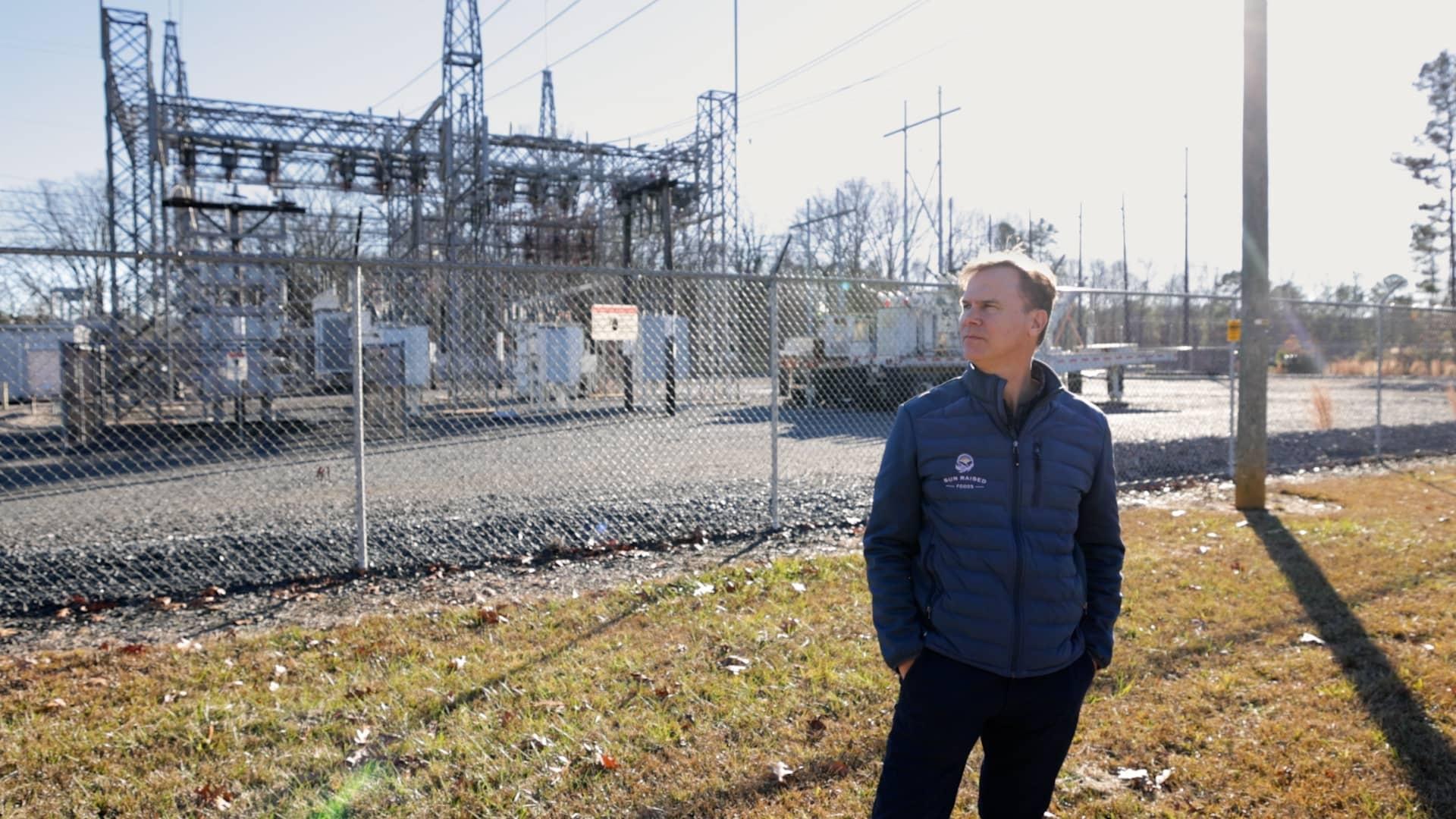
“During daylight hours, the Montgomery Sheep farm is basically filling up the local bucket here. So, the power on that transmission line gets transmitted downline,” Joel explains.
To Joel, it makes sense to generate power close to where it’s needed rather than transporting it over long distances.
“60% of the US population lives east of the Mississippi. So, putting a bunch of solar in the desert and somehow transporting that to the East Coast doesn’t make a lot of sense,” he says. “We’re located 60 miles from Charlotte; we’re located 60 miles from Raleigh [and] 40 miles from Greensboro. So, in a sense, we’re in a rural part of the state, but we’re certainly not in the desert in Nevada. So, whatever we generate here is very closely linked to what people in the utility industry call our load centers: the larger cities where we need a lot of power.”
And to Joel, it’s not just the electricity being generated but the economic benefits that come with it that should be kept local.
“I think what makes the most sense is creating those jobs, manufacturing the equipment here where people live and where they use the electricity itself,” he says.
Having sheep amongst solar panels creates obvious benefits for farmers and solar installation managers in maintaining the vegetation around the panels. But Joel has seen additional benefits to the sheep and the land.
“Normally, you’ll see the sheep kind of attracted to being underneath the panels because of the environment it creates,” he explains. “In the winter, you’re protected from snow and rain and whatnot, but in the summer, you’re protected from the heat.”
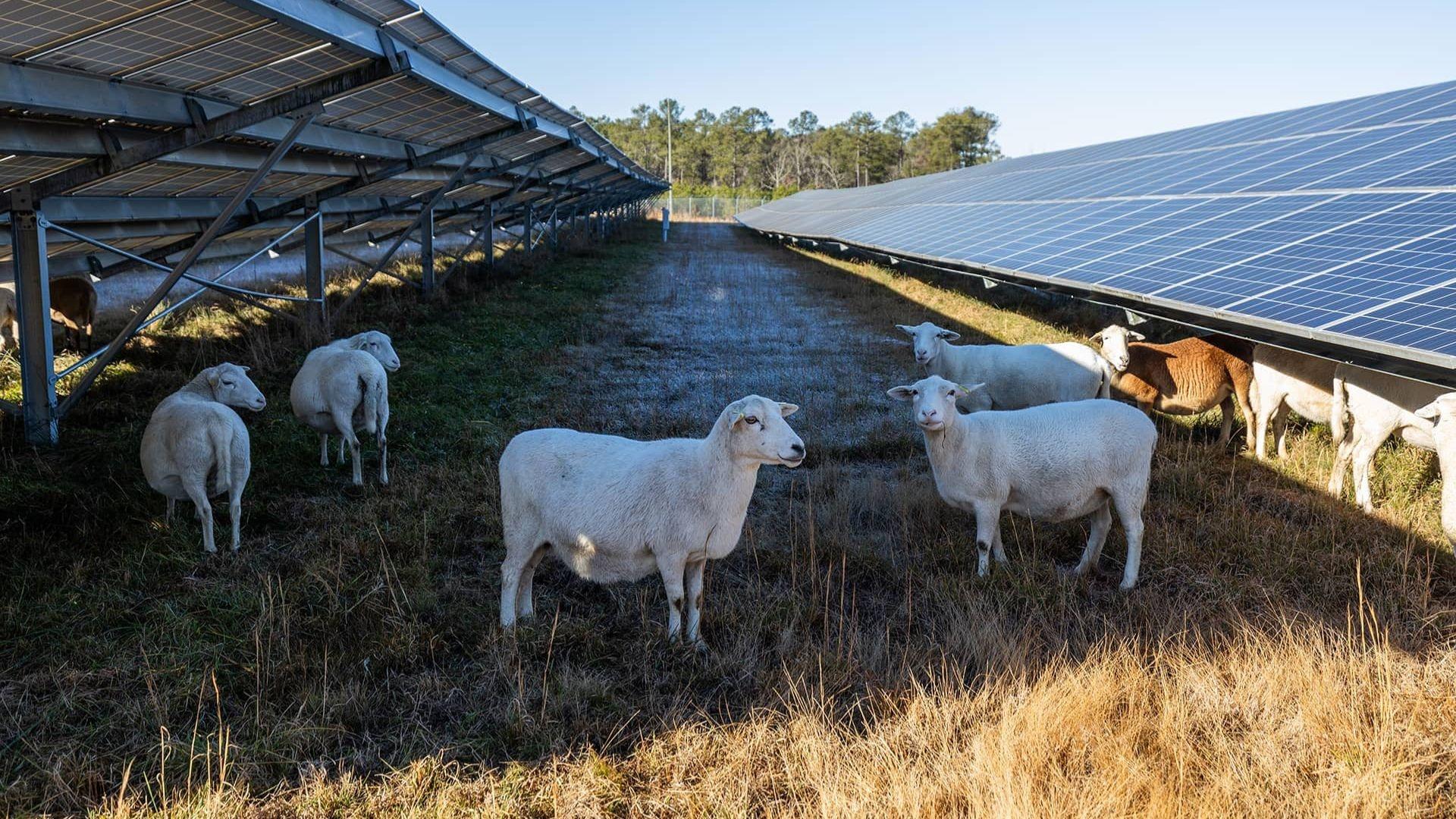
And the panels also create a unique microclimate for the plants growing underneath them.
“The solar panels do two things. One is they kind of mimic what trees do: they create shade that lowers the temperature on different parts of the soil. So underneath the solar panels, you have vegetation like clover and fescue that don’t normally grow in North Carolina in the middle of the summer. And you can very clearly see that line where the sun hit during the summer months and created this different type of grass—Bermuda or crabgrass or hot weather grasses,” Joel shows, pointing at the browner patch of grass between the panels. The fall and summer grasses are dying off while cooler-weather grasses beneath the panels remain green.
“You’ve got this diversity in vegetation, which is good for their diet,” Joel explains.
And as the sheep roam around, clipping the vegetation short to the ground, they’re also processing that greenery and returning it to the earth as manure. Joel reaches down and digs up a small handful of dark crumbly soil.
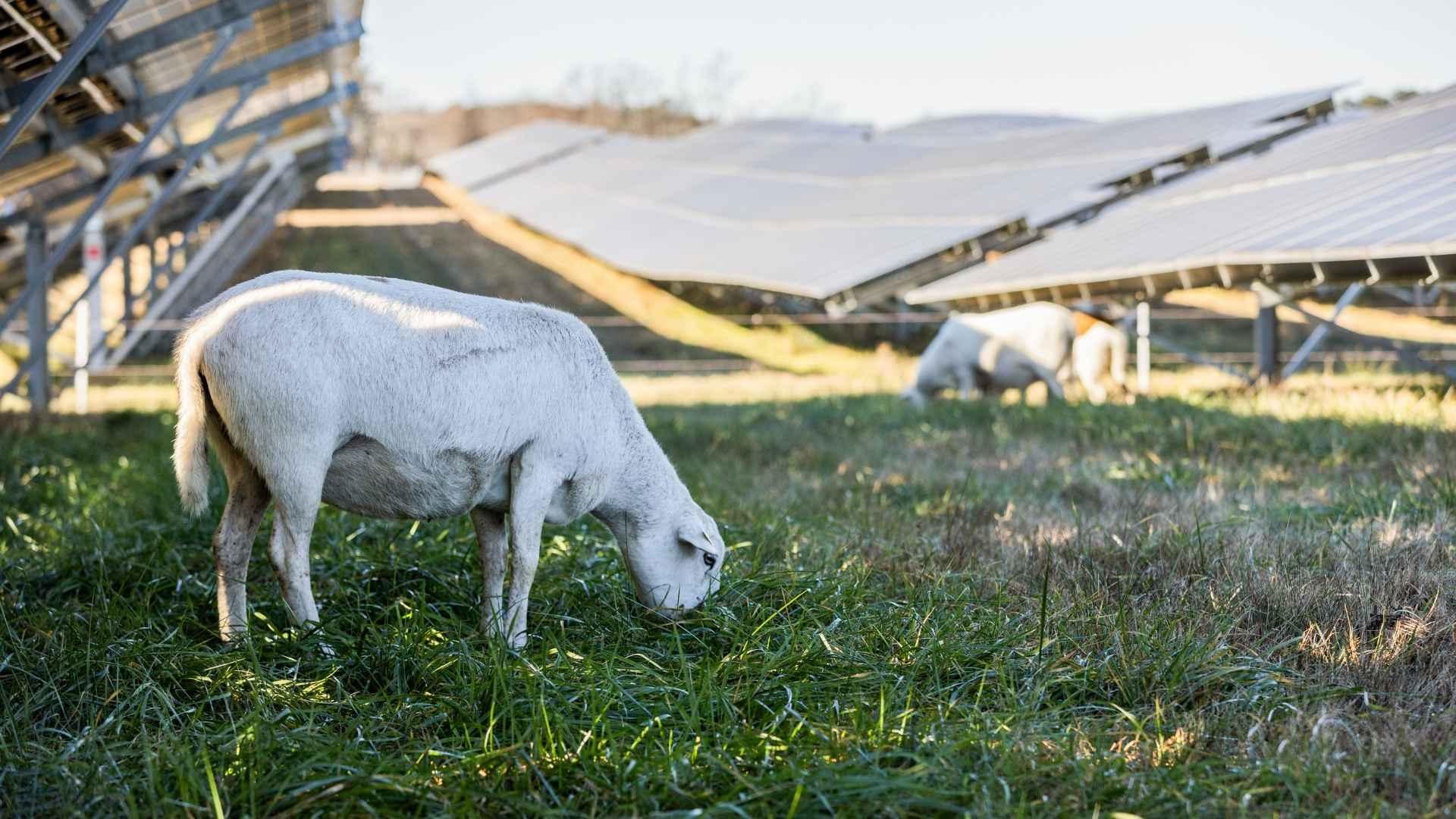
“Before we had a solar farm and before we had sheep, there wasn’t much organic matter in the soil. But now you see how thick it is. So that’s really good to regenerate the health of the soil,” he explains.
Some studies even show that putting solar panels on farmland with degraded soil and letting it rest for several years while managing it properly can allow the soil to rejuvenate.
“It’s a really neat ecosystem on a solar farm because they have kind of the best of both worlds,” Joel says.
Joel and Tonje were at the forefront of North Carolina’s solar installation boom in the 2010s.
“By 2016, we had the second most solar installed in the country here in North Carolina,” Joel shares.
Things shifted after 2016 as more regulations were created.
“Because of some of the legislative and regulatory changes, a lot of the market that was here in North Carolina has moved to other states,” Joel explains. “We’ve gone from number two in the country [to] number four, and we’re falling pretty fast. So, it’s something [where] we need to get together … and find a solution that allows us to generate the power we need cleanly, affordably and safely.”
“I think you can only disobey the laws of gravity so long,” he says. “Solar really is the most economical gravitational force for energy generation.”
Sheep and solar panels work hand in hand to generate enough power for a small town.
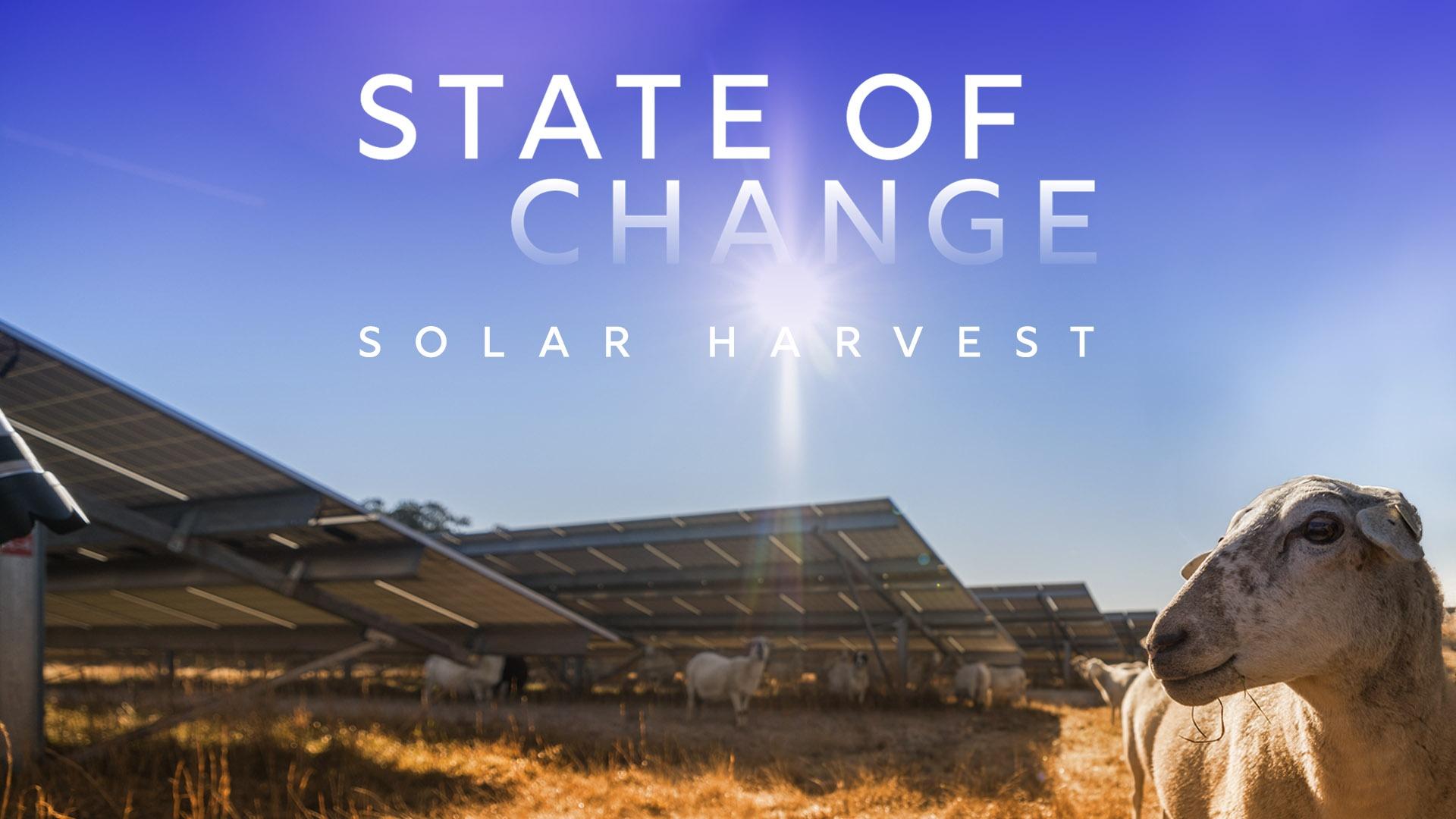
Energy generation is one of the biggest contributors to carbon emissions, so renewable sources like solar are seen as effective options for reducing our carbon footprint. However, land that’s ideal for solar installations is also prime for farming. Fortunately, we can have both. Find out how North Carolinians are getting creative about how to generate solar energy alongside agriculture.
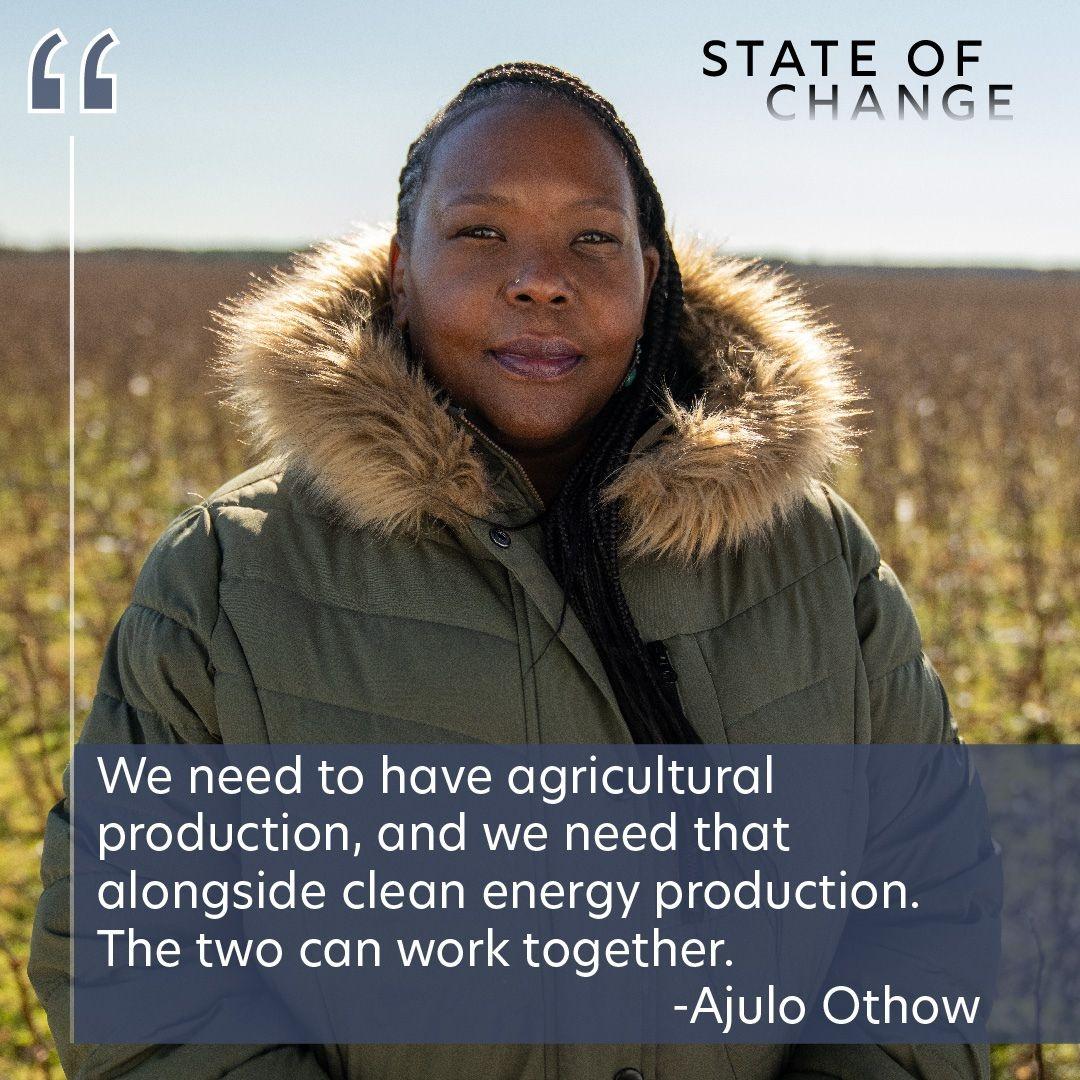
Can farming and solar-energy production coexist? EnerWealth works with farmland owners and energy co-ops to make sure rural communities get a piece of the pie.
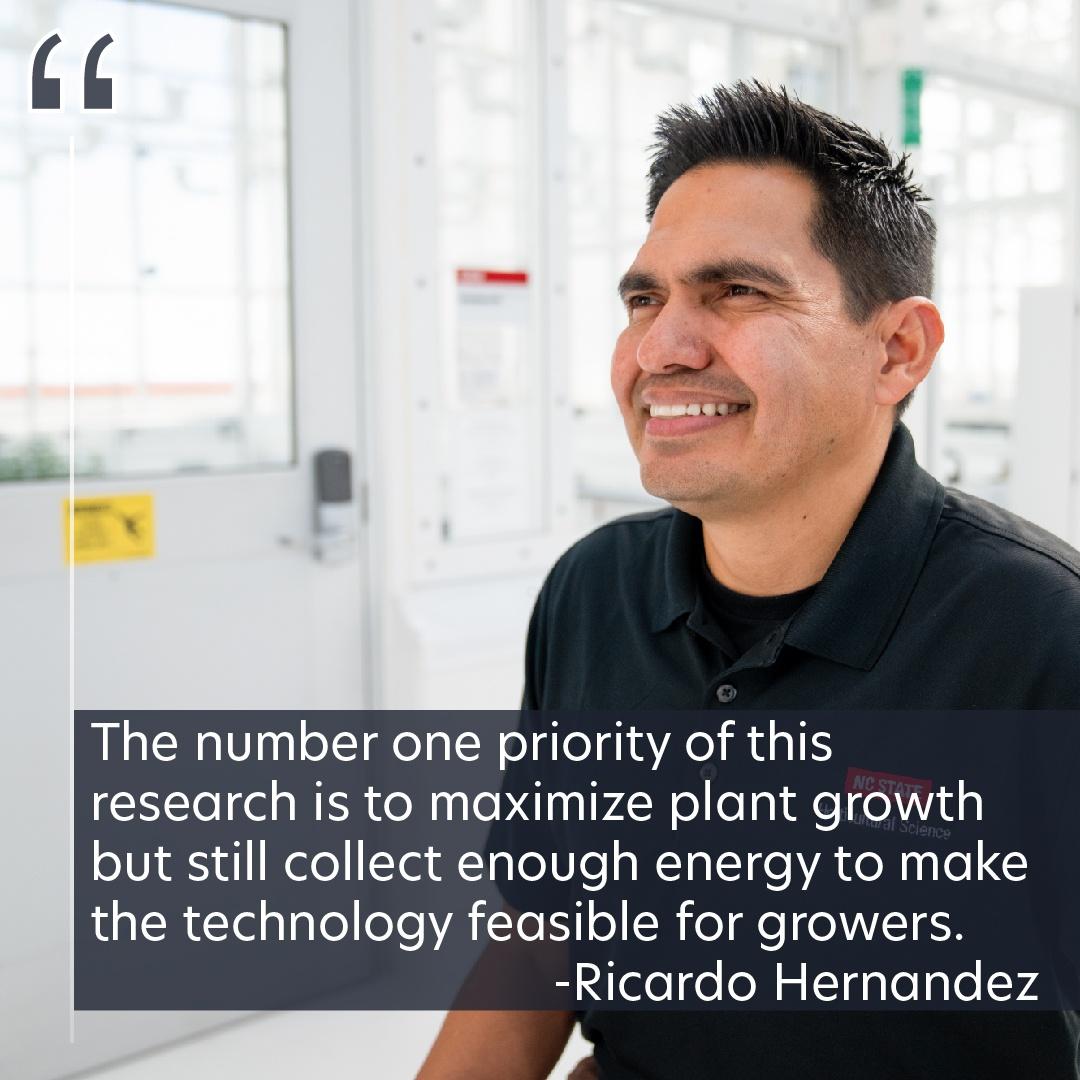
Farmland is being lost to development at an alarming rate. What if solar energy could provide farms with steady revenue and share the field with valuable crops?
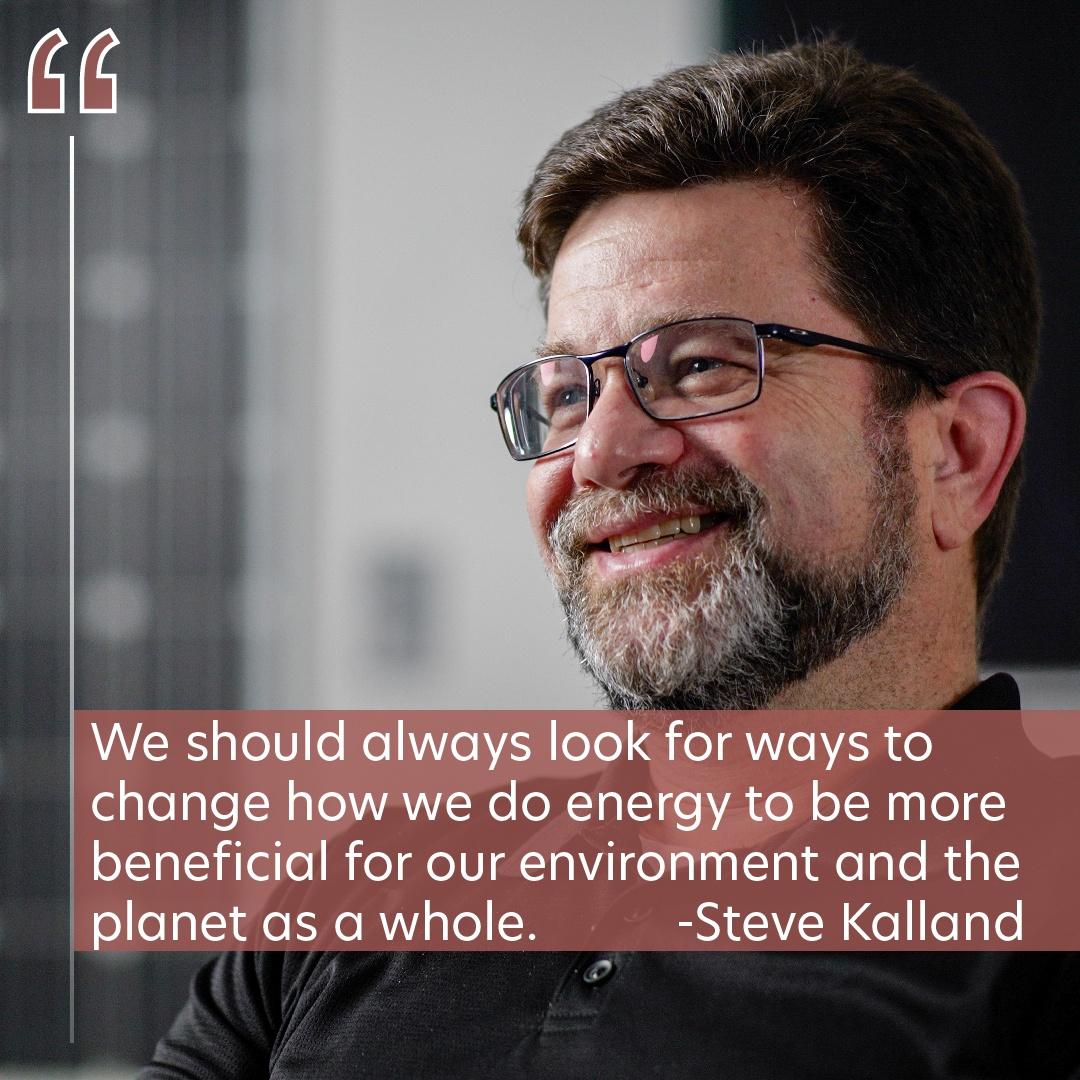
PBS NC producer Michelle Lotker and clean energy expert Steve Kalland of NC State discuss solar energy production in North Carolina and look toward the future.
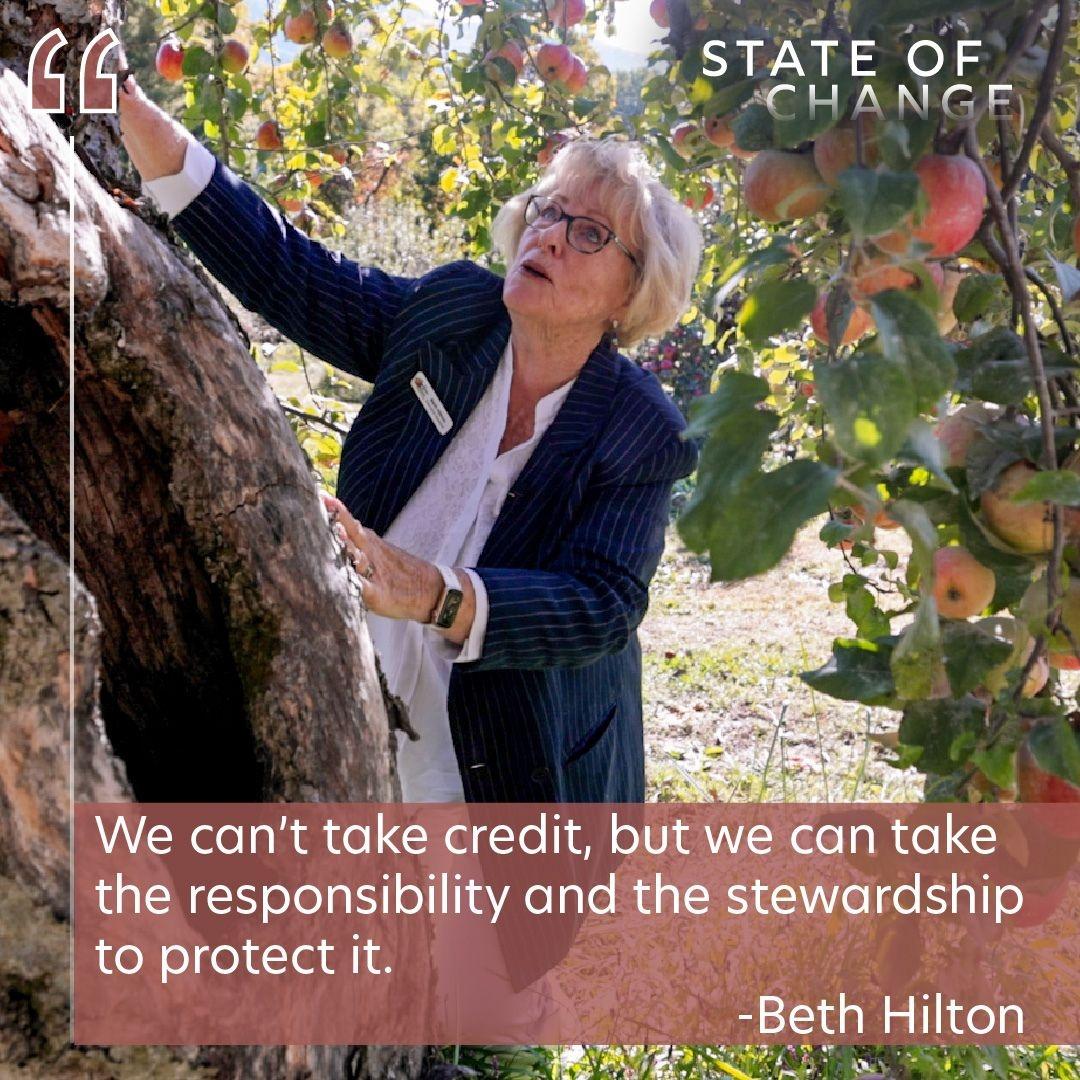
The Conservation Trust for NC and the Historic Orchard at Altapass work to strengthen climate resiliency along the Blue Ridge Parkway through land conservation.
